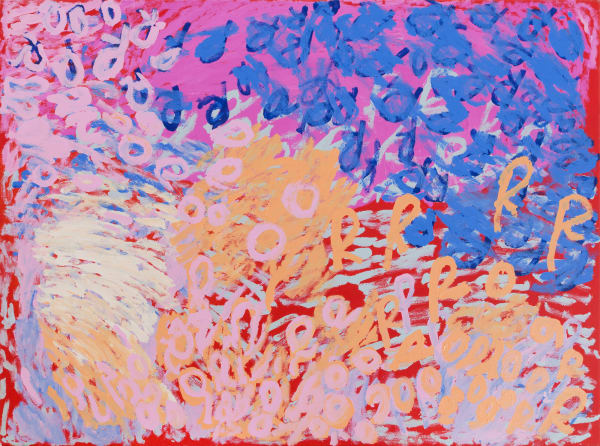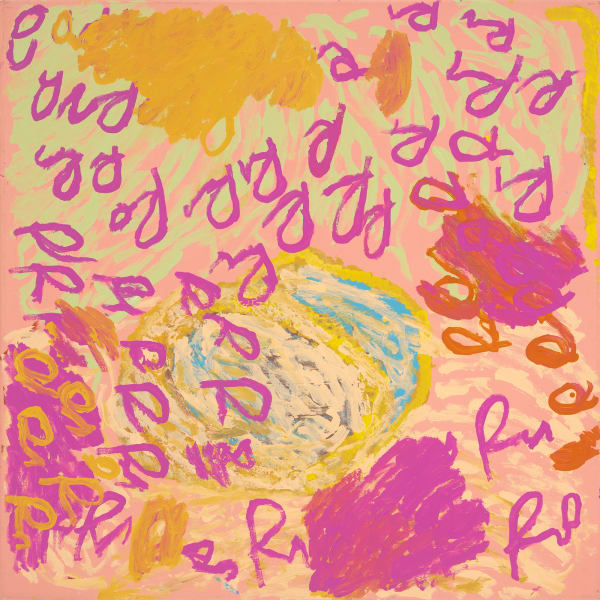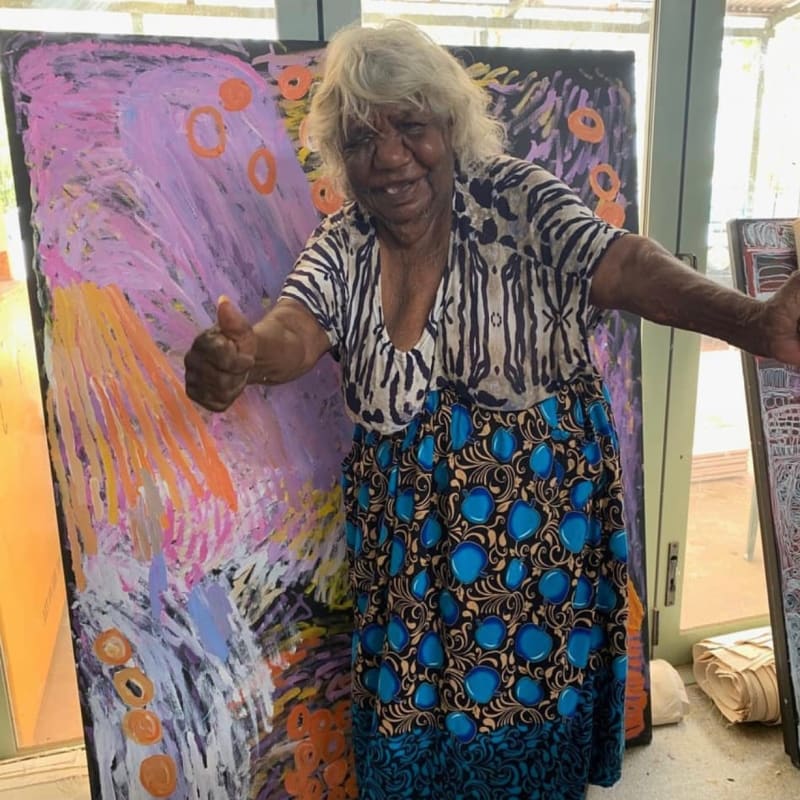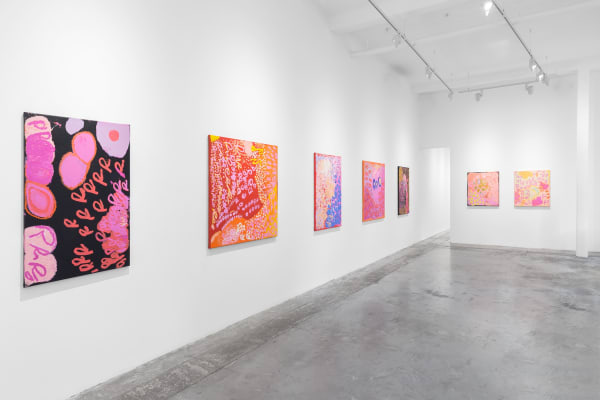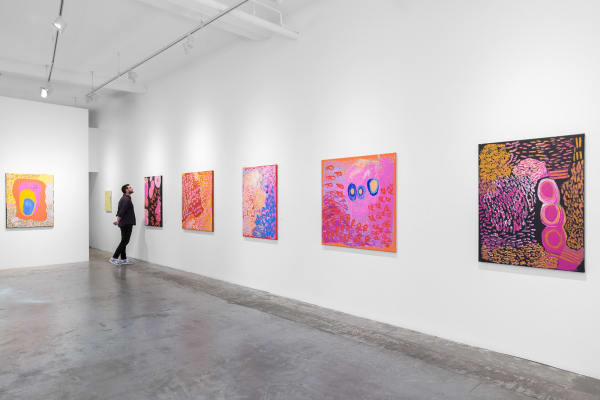Rosie Tarku King: I've Walked Long Way
-
 Rosie Tarku KingWind Blowing, 2021acrylic on canvas120 x 120 cmSold
Rosie Tarku KingWind Blowing, 2021acrylic on canvas120 x 120 cmSold -
 Rosie Tarku KingFamilies' Jilas, 2022acrylic on canvas120 x 120 cmSold
Rosie Tarku KingFamilies' Jilas, 2022acrylic on canvas120 x 120 cmSold -
 Rosie Tarku KingLooking from the Sky, 2021acrylic on canvas120 x 120 cmSold
Rosie Tarku KingLooking from the Sky, 2021acrylic on canvas120 x 120 cmSold -
 Rosie Tarku KingUntitled, 2021acrylic on canvas90 x 120 cmSold
Rosie Tarku KingUntitled, 2021acrylic on canvas90 x 120 cmSold -
 Rosie Tarku KingMy Country, 2021acrylic on canvas60 x 177 cm
Rosie Tarku KingMy Country, 2021acrylic on canvas60 x 177 cm -
 Rosie Tarku KingMy Country, 2021acrylic on canvas90 x 90 cmSold
Rosie Tarku KingMy Country, 2021acrylic on canvas90 x 90 cmSold -
 Rosie Tarku KingMy Country, 2021acrylic on canvas90 x 90 cmSold
Rosie Tarku KingMy Country, 2021acrylic on canvas90 x 90 cmSold -
 Rosie Tarku KingMy Country, 2021acrylic on canvas119 x 90 cmSold
Rosie Tarku KingMy Country, 2021acrylic on canvas119 x 90 cmSold -
 Rosie Tarku KingOld Man One Jila/Jumu, 2020acrylic on canvas90 x 120 cmSold
Rosie Tarku KingOld Man One Jila/Jumu, 2020acrylic on canvas90 x 120 cmSold -
 Rosie Tarku KingOld Man One Jila/Jumu, 2020acrylic on canvas120 x 90 cmSold
Rosie Tarku KingOld Man One Jila/Jumu, 2020acrylic on canvas120 x 90 cmSold -
 Rosie Tarku KingWarrimpajartu Jila, 2017acrylic on canvas119 x 89 cmSold
Rosie Tarku KingWarrimpajartu Jila, 2017acrylic on canvas119 x 89 cmSold -
 Rosie Tarku KingUntitled, 2021acrylic on canvas119 x 80 cmSold
Rosie Tarku KingUntitled, 2021acrylic on canvas119 x 80 cmSold -
 Rosie Tarku KingMy Country, 2021acrylic on canvas120 x 60 cmSold
Rosie Tarku KingMy Country, 2021acrylic on canvas120 x 60 cmSold -
 Rosie Tarku KingMy Country, 2021acrylic on canvas120 x 90 cmSold
Rosie Tarku KingMy Country, 2021acrylic on canvas120 x 90 cmSold -
 Rosie Tarku KingMy Country, 2021acrylic on canvas60 x 60 cmSold
Rosie Tarku KingMy Country, 2021acrylic on canvas60 x 60 cmSold -
 Rosie Tarku KingWaterhole to Drink, 2021acrylic on canvas90 x 60 cmSold
Rosie Tarku KingWaterhole to Drink, 2021acrylic on canvas90 x 60 cmSold -
 Rosie Tarku KingMy Country, 2021acrylic on canvas90 x 60 cmSold
Rosie Tarku KingMy Country, 2021acrylic on canvas90 x 60 cmSold -
 Rosie Tarku KingMy Country, 2021acrylic on canvas60 x 45 cmSold
Rosie Tarku KingMy Country, 2021acrylic on canvas60 x 45 cmSold -
 Rosie Tarku KingMy Country, 2021acrylic on canvas60 x 45 cmSold
Rosie Tarku KingMy Country, 2021acrylic on canvas60 x 45 cmSold
While painting with peers at Mangkaja Arts Resource Agency, Rosie Tarku King often tells a story of herself: how she walked out of her home in the Great Sandy Desert with her sister, Penny, aged around sixteen. Rosie and Penny continued to walk, and walk, across the Pilbara over the course of their lives. There are flashes of detail available to us, as a public audience, in the story of these lives: various stations, towns, and places that they have passed through, from Billiluna Station to Fitzroy Crossing, and now, accounts of their thirty years at Mangkaja. No written record exists to show Rosie’s precise year of birth, and the verbal account that she is able to give of her history has also gradually shadowed as she has started to experience memory loss in her ninth decade. Painting remains a vital way for Rosie to touch the live wire of the life she lives and has lived, and the culture and relationship to Country which are braided through it.
Rosie’s recent paintings retain many of the visual elements that she has become well known and admired for, including the strong linework in her depictions of jilji (sand hills), as well as the jila (living waterholes) and jumu (soakwater waterholes) that she has spent her life amongst. However, where her compositions have previously incorporated emphatic, focussed depictions of jilji – often centred in the frame, or surrounding waterholes in her earliest work – these recent paintings are more dispersed, with spatial relationships between geographical elements now softer, and more fluid. Repetition and patterning now have the sense of rendering open and shifting space – between places, and between experiences and memories of those places. In the acrylic on canvas Wind Blowing, for example, for which Rosie was a finalist in this year’s Sulman Prize, gestural strokes of yellow, orange, and pink shift – like the wind, but also in a way that feels tectonic – around the image’s focal jila, placed off to the left side of the space. We might imagine Rosie’s peripatetic life as something like this blowing wind, passing through landscapes and the stories they hold. But her embodied, affective, and artistic relationships to the land that this wind blows over should not be forgotten in this imagining.
Rosie’s influences, like those of many artists from the Walmajarri and surrounding groups, are traceable not so much to individual mentors or teachers as they are to broader cultural and geographical histories, though she and her peers at Mangkaja Art have certainly left their marks upon each other. The stories that Rosie paints in her characteristically vivacious palette relate often to family, and the histories of her matrilineal and patrilineal lines. One of the most influential relationships of her artmaking life continues to be with her sister, whose presence and practice alongside Rosie have persisted through to today. Earlier in her life, she and Penny would make yakapi – sandals for walking across hot desert earth – as part of their practice. A rich cultural inheritance, and a rich tie to her sister, have been with Rosie each step of the way.
Many of the works showing with Arthouse Gallery as part of ‘I’ve walked long way’ spill over with another new visual element for Rosie: endless iterations of the letter “R” in electric pinks and reds. By the account of Liam Kennedy, who manages Mangkaja Arts, the practice of initialling or signing the canvas has been taken up by a number of Mangkaja artists as they grow older – and it should be noted, too, that many art centres in the region are currently watching their significant figures reach their eighth or ninth decades. The “meaning” of these marks isn’t easily ascribed, and perhaps ascribable meaning is precisely not the point. At once, this lettering figures a relationship to land which is shaped by a culture at least 65,000 years old, and one which is held, resolutely, within the hands of one individual person. What is passed from these hands to ours, as viewers, is at once historical and impossibly intimate: some sense of a remarkable, and remarkably bold, life.
Erin McFayden
Deputy Editor, Artist Profile
Rosie Tarku King was a finalist in the 2020 Telstra National Aboriginal and Torres Strait Islander Art Awards (NATSIAA) at the Museum and Art Gallery Northern Territory. She was awarded The Kathy Donnelly Award in the 2021 Jury Art Prize in Western Australia and was selected as a finalist in the 2022 Sulman Prize at the Art Gallery of New South Wales for her work Wind Blowing. Her works are included in the collection of the Art Gallery of Western Australia and the National Museum of Australia.
Mangkaja Arts is a non-profit, Indigenous owned and governed centre in the West Kimberley regions of Western Australia. They are innovators, as well as artistic and cultural leaders. Mangkaja Arts presented works as part of The National 2019 at Museum of Contemporary Art Australia. They also collaborated with Gorman on a collection that same year.
Arthouse Gallery is delighted to present this exhibition in collaboration with Mangkaja Arts. We also acknowledge the Gadigal people of the Eora Nation, the Traditional Owners of the land on which this exhibition takes place.



